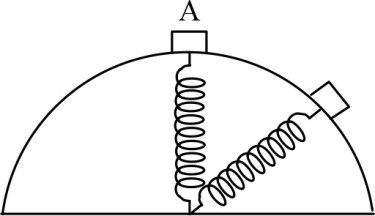Q.
A bead of mass $m$ can slide without friction along a vertical ring of radius $R$ . One end of a spring of force constant $k=\frac{3 m g}{R}$ is connected to the bead and the other end is fixed at the centre of the ring. Initially, the bead is at the point $A$ and due to a small push it starts sliding down the ring. If the bead momentarily loses contact with the ring at the instant when the spring makes an angle of $60^\circ $ with the vertical, then the natural length of the spring is

NTA AbhyasNTA Abhyas 2022
Solution:
